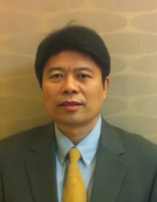Exploring material genes and structure chemistry in Li-ion batteries
Pan Feng
School of Advanced Materials, Peking University Shenzhen Graduate school, Shenzhen 518055
EXTENDED ABSTRACT: (1) Exploration of “Material Genomics” and new expression of structural chemistry: comparing to biological genes, we aim to explore the nature of “material genes” and how we can use it to accelerate the discovery of new materials. To achieve this goal, material big data and AI research system are established through interdisciplinary studies; new expression of structural chemistry is proposed based on graph theory, and accurate in-situ analytic system is developed for big scientific facilities. (2) Exploration of “material genes” and structural electrochemistry in Li-ion batteries: establishing the correlation between structure and performance of cathode materials through studying the arrangement and interaction between structural units. For instance, study the super-exchange interaction of d-orbital spinning electrons in transitional metals and its impact on structural ordering and performance; analyze the broken symmetry of material interfaces and utilize its chemical/electrochemical reconstruction during synthesis and application to regulate the performance of battery materials.
REFERENCES
( 1) "In situ Raman spectroscopy reveals the structure and dissociation of interfacial water", Nature, 2021, 600,81–85.
( 2) Understanding Co roles towards developing Co-free Ni-rich cathodes for rechargeable batteries, NatureEnergy ( 2021), DOI: 10.1038/s41560-021-00776-y;
( 3) Structural origin for the high voltage instability of lithium cobalt oxide, Nature Nanotech( 2021),DOI: 10.1038/s41565-021-00855-x;
( 4) Algebraic graph-assisted bidirectional transformers for molecular property prediction", Nat. Com. 2021,12(1), 1-9;
( 5) Construction and Application of Materials Knowledge Graph Based on Author Disambiguation: Revisiting the Evolution of LiFePO4", Adv. Energy Mater. 2021, 2003580;
( 6) "Encoding the atomic structure for machine learningin materials science", WIREs Comput Mol Sci. 2021;e1558;
( 7) Ultrafast solid-liquid intercalation enabled by targeted microwave energy delivery, Science Adv( 2020) 6 : eabd9472;
( 8) Ni/Li disordering in layered transition metal oxide: electrochemical impact, origin and control, Acc. Chem. Res. ( 2019) , 52, 2201;
( 9) In situ quantification of interphasial chemistry in Li-ion battery, Nature Nanotech., (2019) 14(1) 50–56

Prof. Feng Pan, chair-professor is the vice president of Peking University Shenzhen Graduate School and the founding dean of School of Advanced Materials, Peking University Shenzhen Graduate School. Prof. Pan has been engaged in fundamental research of structure chemistry, exploring “Material Gene” for Liion batteries and developing novel energy conversion-storage materials & devices. He has over 360 publications in scientific journals including Nature, Nature Energy, Nature Nanotech, Joule and J. Am. Chem. Soc. Etc. He has been the executive editor in chief of Chinese Journal of Structural Chemistry since 2020. Prof. Pan received award Electrochemistry Contribution Award of China in 2021, ECS Battery Division Technology Award in 2018 and IALB Research Award in 2016.